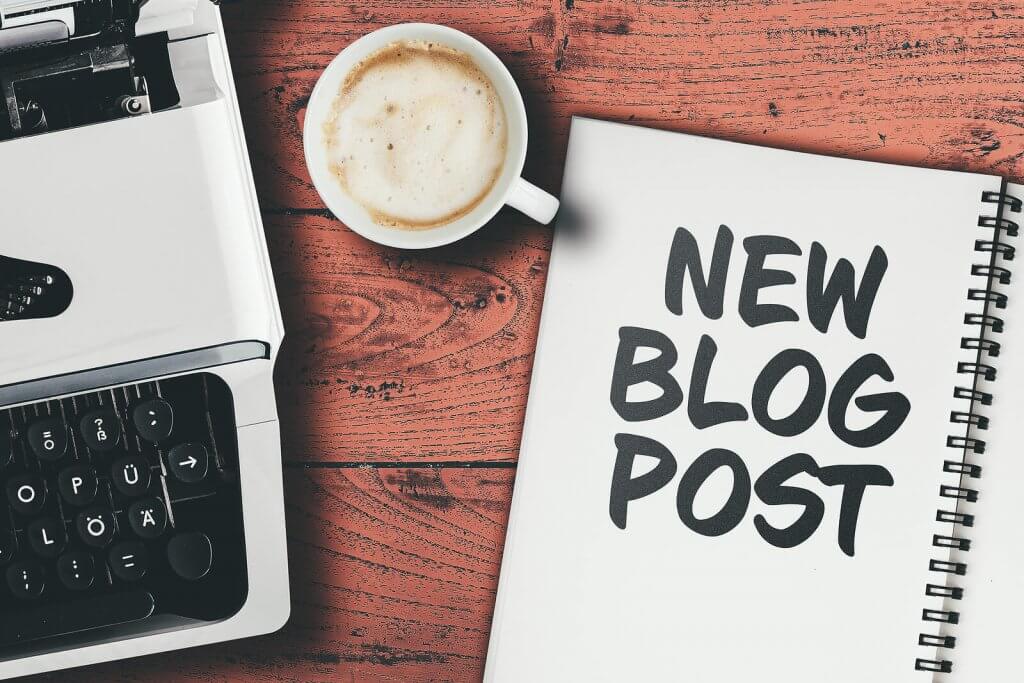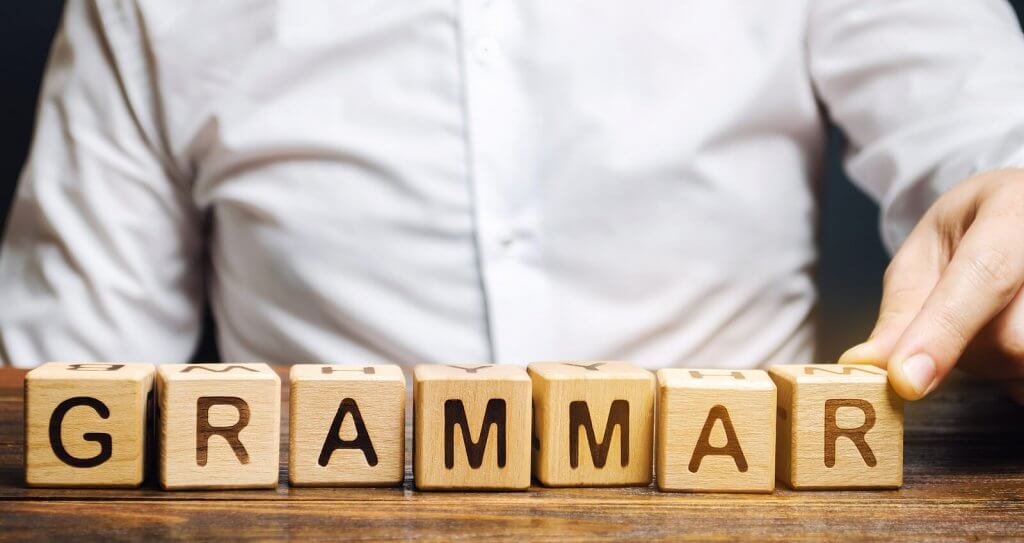Copywriting tips and tricks: A complete guide
Table of contents
- What is copywriting?
- What copywriters do
- Becoming a copywriter
- Copywriting styles
- SEO copywriting tips
- Blog writing tips
- Press release writing tips
- Proofing and editing tips
- General writing rules: Mismatched phrases
- General writing rules: Grammar and punctuation
Whether you’re writing to inform, inspire, engage, or persuade, copywriting is what pioneers every brand. Knowing how to successfully craft the written word and hone your unique tone of voice (TOV) can increase conversions and help you reach new audiences.
We’ve created an extensive copywriting style guide covering how you can better create and tailor your content.
What is copywriting?
At its most basic level, copywriting is the creation of words for public consumption.
Copywriters traditionally write for advertisements and marketing materials, including digital content. They are the dedicated wordsmiths who curate and perfect content on behalf of their clients.
There is no precise definition of what a copywriter does, but you could argue there are two general kinds of copywriting:
- Writing to inform
- Writing to advertise
Both can work in offline and online fields, although the former generally tends to work better for online platforms.
What copywriters do
A typical writing day might consist of creating a guide, news article, blog, or ‘copy’ for the pages of a website. Depending on the task at hand, the copywriter might do this several times a day for various clients.
This level of diversity requires a copywriter to write in different styles and voices across a range of industries. The work may be tailored to a specific audience, such as a particular age range, gender, socio-economic group, or groups with common interests.
A copywriter will typically create content using an objective voice. In most cases, they won’t have their name attributed to content created on behalf of their client.
Some copywriters don’t work for clients at all, but work ‘in-house’, i.e. for a company, corporation, or media outlet that hires someone to create its content.
In-house work comes with a more generous salary, and the perks can be greater ranging. The writing, however, orients around one company and industry.
More than words
Aside from writing, a copywriter is faced with various tasks, both pre and post copy.
The first step of content creation is the ideas that come behind it. Copywriters will spend much of their time in ideations to research and create detailed content plans for future work. Ideations may happen daily, depending on requirements, and will always happen upon introducing a new client.
Aside from proofing their own work, a copywriter might also proof the work of other writers. This could be someone in their team or anyone across the company, including their direct manager or CEO.
Proofing can be challenging, as the reader must be meticulous and unforgiving in their work — there is simply no room for mistake when it comes to good copywriting.
A copywriter might also source images for their work. They may have a large bank of photographs to work with, or their employer might have subscriptions to services such as Shutterstock. They could also source royalty-free images from platforms like Creative Commons.
It’s also becoming increasingly common for agency-based copywriters to partake in various social media tasks and campaigns, as they tend to have an educated opinion about what media will be relevant to a particular audience.
Becoming a copywriter

As with any profession, starting as a copywriter can be the most challenging step of a person’s career.
Fledgeling copywriters often find themselves in internships or work experience roles and are likely to partake in a lot of other free work to build experience. The amount of free work a writer has to offer can depend on how prepared that person is when they start their career, which is more often than not at the end of university.
A degree is not strictly necessary
Qualifications could help you get your foot in the door, but they don’t always have to be specific to the copywriting field. Related courses often contain copywriting modules, which can help anyone looking to break into the field. Many copywriters study highly associated subjects such as English, journalism, and marketing.
Quite often, however, they won’t start their degree with copywriting in mind, as it is an interest usually picked up along the way. Some copywriters studied philosophy, history, or film production, which can help students develop skills required by copywriters.
Most of the time, experience usually holds greater weight than a degree, which is why it is a good idea to put experience before qualifications on a CV.
Gaining experience
Even with one of the best degrees, it would be nigh on impossible to walk into a copywriting position with no formal experience.
You could gain experience while at university, as many institutions’ magazines and newspapers are produced by the students.
The centre of opportunity for any budding copywriter is the careers department. Here it is possible to gain advice, work experience, part-time work, and summer internships in practically any given field.
During these crucial stages of experience, a copywriter can do one essential thing; build a portfolio.
Those who find themselves unable to acquire a short position at a magazine or newspaper should consider building their own blog. Whether on WordPress or Blogger, find a relevant and unending topic you’re passionate enough to write about.
Building your portfolio
Copywriting examples are crucial for showcasing your talent to potential employers.
If you’re starting with your blog or magazine, you can put hard work into serious articles and write in various styles and personalities. This will demonstrate an adaptable skillset that can be applied to many industries.
Don’t be afraid to approach a business and offer free work so you can build your portfolio.
Whether they are a friend, family member, or a small business you know, ask if they need help with a little website copy, press release, or brochure. You could even offer to write a couple of blog posts a month.
You’ll be doing the company a favour while also building your archive of writing examples. It could even lead to something more, like freelance writing or a paid contract with another company.
Building an online presence
As with any job in a digital market, it’s imperative for copywriters to have some online presence, whether that’s through your website, LinkedIn, or a professional Twitter account.
Now more than ever, managers and business owners look to social networks to check the digital lives of applicants. Depending on how you behave and conduct yourself online could be what decides the outcome of your application.
Creating a LinkedIn profile gives employers a chance to view your professional and academic history and what kind of person you might be.
LinkedIn also helps you connect with other copywriters to see what information they share and what kind of work might be available in your locality. You can also join copywriting groups and forums, where copywriters of all levels get together and share experiences, ideas, and opportunities.
Twitter is also a beneficial platform, as many copywriters are quite consistent in their social media approach. Although it won’t be quite as effective as LinkedIn, a well-kept account of knowledgeable tweets, retweets, and articles could give you the boost you need should an employer check your profile.
Copywriting styles
Just as there are many different forms of marketing, there are also many types of copywriting.
Some copywriters will only handle a small variety of copywriting types. Others, who might work freelance or in a digital agency, will have to turn their hand to a wide range of tasks, with each one varying in style, tone and purpose.
Let’s take a look at the different kinds of copy a copywriter might be expected to produce throughout their career.
Advertising copy
By far one of the most well-known types of copywriting, the purpose of advertising copy is ultimately to sell a product. From physical marketing materials such as billboards to online advertising, it requires a unique sense of creativity.
An advertising copywriter will often create memorable slogans, taglines and headlines. These need to be unique and relatable, so a great deal of work will go into every word.
Many of the most memorable straplines were crafted by some of the world’s most recognised writer’s. Salmon Rushdie, author of the 1981 novel Midnight’s Children, is responsible for several household phrases like “that’ll do nicely” for American Express and “irresistibubble” for Aero chocolate bars.
Quite often, an advertising copywriter will work alongside a team of designers to create artwork and slogans that pair well.
As you can imagine, advertisement copywriters need to be highly creative to encourage customers to buy the product or service advertised.
If you want to know more about writing for advertising, advertising copy legend, David Ogilvy, wrote seven commandments to ensure your writing sells.
Email copy
Depending on the role of a copywriter, they might create a multitude of emails.
These emails will largely consist of marketing and promotional material but can also include information on news bulletins such as membership updates.
The role of the email copywriter is to create content that grabs the reader’s attention, sells the offering, and converts that reader into a sale or new client.
These emails are often tracked by the client or agency, who will analyse the number of people who have opened the email, how long they spent reading it, and whether or not they clicked on any company links.
Bourn Creative in Sacramento, California, has a great breakdown of creating a compelling and successful marketing email.
Press releases
Much like email copywriting, press releases aim to catch the reader’s attention and inspire them into action. They are often sent to journalists, editors, magazines, and newspapers.
Usually, a copywriter who works for an agency would be promoting a news story, a creative campaign, or some research that their agency or client has conducted.
It is not unusual for a single press release, consisting of anywhere between 300 and 600 words, to have up to five or six hours spent on it.
More often than not, a copywriter will create a professional relationship with journalists and editors who have accepted and published releases in the past.
They’ll usually have a bank of contacts that might be interested in a specific release. If they are lucky, a copywriter shall have access to databases such as Gorkana, which provides information on how certain journalists like to be contacted and what times are best to send releases. This gives them chance to send the press release directly to the audience.
Radio copy
A copywriter in radio will often find themselves working in local stations to write for advertisements aired on the radio.
Like advertising copy, a radio advert will need to be easily understood, snappy, and have a core message that relates well with the target audience.
A radio copywriter must understand the client’s goal before creating content.
A story or plot will often be incorporated into an ad, so it’s important that a radio copywriter knows how to create believable dialogues between characters.
Once the creative director has approved a script, it will be recorded in a studio and broadcasted.
Technical copy
The main difference between a copywriter and a technical copywriter is to persuade or explain.
But there is room for overlap.
A technical writer will have to explain a topic in clear and concise language to their audience. The writing will be more complex if targeted at readers or clients knowledgeable about the subject or simplified for those without prior understanding.
A technical copywriter needs to research, understand, and explain any given subject in the fashion of an expert.
With many forms of copywriting, a technical copywriter might be tasked with an array of projects and pieces, including:
- Article production
- Website copy
- Whitepapers
- User manuals
- Technical guides
- Reports of any kind
While there is scope for creative work, technical copywriters will primarily create informative pieces. A typical copywriter might only need a day to write an engaging or persuasive page, while technical writers will often require weeks or even months to research and produce their expert content fully. Find out more about technical writing services.
Website copy
A copywriter who creates content for websites may work in-house or in a client-based agency that specialises in digital marketing or SEO to produce and optimise blogs, landing pages, category descriptions and more.
Copywriters that work primarily with website copy tend will be well-versed in digital best practices as well as having a firm grasp of the written word. They will often work around user experience and be aware of technical aspects, including basic HTML, CSS, and SEO.
SEO copy

There are two aims that an SEO copywriter must achieve in modern SEO.
The first is that the copywriter must create appealing, interesting and engaging copy that serves the reader’s needs. The second is that it must also be beneficial for the website in terms of SEO, in that it must both perform and adhere to guidelines set out by search engines. In many ways, SEO copywriting is a more tailored discipline than other forms of copywriting.
SEO copywriting had a rocky beginning, with many SEO agencies historically creating poor copy solely for the use of search engines. This copy would often be “stuffed” with keywords, and a 500-word article would be written in anything from 30 minutes to an hour (a process that would be repeated several times throughout the day).
Since around 2011, however, Google and other search engines have implemented a range of algorithms that detect and punish websites with low quality, duplicate, or manipulative copy.
Thanks to the update, SEO copywriters have moved away from low-quality churn, focussing instead on the target audience by creating engaging, informative, and well-written copy that is fit for purpose.
SEO copywriting tips
As mentioned earlier, many consider traditional and SEO copywriting as two separate fields. Although this might have been true in the early 2000s, the gap between SEO tactics and good content has now largely been filled — keyword research aside.
Words need to engage
The time of keyword stuffing and churn copywriting is (thankfully) beginning to fade away, with more SEO writers embracing best writing practices.
Modern SEO copywriting should be all about compelling content that will garner traffic and links. Whether the copy will be placed on an interactive website or a blog, it should increase trust and establish authority.
Keywords should be naturally placed
Keywords are still crucial to SEO, but writing for humans is arguably more so.
It’s important to ensure keywords are in the text, but they should be included naturally to not look strange or out of place to the human eye.
If a reader can detect keyword manipulation, then so will Google and other search engines.
However, it’s worth placing a primary keyword (a core keyword that would represent the main purpose of a business) within the page title and perhaps a secondary keyword in the introduction of a page or article. They can also be used in headers, especially if it poses a question answered in the text, as it could become a Featured Snippet on Google.
The keywords and search terms may appear naturally within the text if you write well enough, although it’s worth checking.
Articles and pages should contain links
In SEO copywriting, both inbound and outbound links are excellent for the reader and for SEO itself.
Outbound links support research and arguments within the text and provide depth for the reader. This should bode well with search algorithms, demonstrating the content has been written to help users further explore a subject.
When writing a landing page or blog, it helps to place internal links within the content naturally. This helps users navigate the website and establish an information hierarchy.
In terms of the anchor text, it’s always worth avoiding links that say “click here”, as it is deemed not descriptive enough for users, and you would also miss the opportunity to place a keyword within the anchor text.
You can visit the MOZ website to find a little more about internal linking.
Encourage a call to action
A good call to action (CTA) helps conclude the copy and encourages readers to take the next step.
Whether the reader is looking to buy or discover more, a CTA must resonate with what they are searching for and help them find what they need.
Look after your images
Images help attract traffic to a website and improve the readers experience by breaking up the copy. They also help make a website more discoverable.
By implementing alt tags alongside a caption under a picture, you can make your content more accessible to screen readers and the images will be searchable in search engines.
It’s also worth knowing that image filenames are searchable in search engines, so try and keep it descriptive and in plain English. While the original image may have been given the filename “CLPUIMAGE1065.jpg”, it would be far better for search if it was named “leeds-canal-summer-calm.jpg”.

When providing images for products, think about how users will search for them and what patterns and variations are used.
It’s also worth considering image sizes. Although large images are great, it’s worth keeping them below 2MB so they don’t slow page load times and affect rankings.
Blog writing tips
Blog writing is an integral part of marketing. An engaging hub that also helps SEO, your blog should be creative and inspirational.
Most copywriters will create blogs throughout their careers, so it helps to know the common do’s and don’ts.
Understand the purpose

Whether you’re in-house or working for an agency, you need a clear understanding of what the business does and what the blog is trying to achieve.
This will vary between clients. Some will be happy with social shares, and others will be pleased to have new and engaging content on their website.
Have a discussion with the client about what they hope to achieve with the blog and what should be avoided.
Don’t oversell
It might be an unfortunate thing from a business point of view, but the vast majority of people don’t care about sales messages in blogs. If they want to know, they’ll look for it elsewhere.
Corporate blogs should engage readers, provide them with useful information or solutions, and help them throughout their daily lives. The blog should then generate leads for a business, increase traffic, and help establish the brand establish online.
Acknowledge your tone
A business will want to keep a similar tone in a blog to the rest of their website, which is fine to an extent. But a blog requires character. Readers need to feel confident that they are reading the words of a person, not a faceless company.
A blog should engage its readers, and it can do this by alleviating business tones and making the blog more conversational.
Some companies will ask their employees to write blogs, often featuring guides and tips about subjects within their skillset. This is an excellent opportunity to involve a range of tones, voices, and styles.
Upload consistently
Producing quality blogs is important, but so is having a regular presence. A good blog should be regularly maintained with consistent uploads.
Keep an up-to-date content plan developed from your content analysis and strategy that will last at least three months. This will help with writing allocation and maintaining a healthy blog presence. It helps to hold regular creative meetings to get new ideas for blog topics throughout the year.
Press release writing tips
For copywriters within marketing agencies, writing press releases will be a common occurrence.
They are a crucial tool that enables small businesses to get their news, research, and marketing into big newspapers.
All press releases deserve large amounts of care, attention, and time to be picked up by journalists.
But where do you start with a press release?
Make sure it matters
The release you write must be worth reading.
The best press releases will contain original research, data, or information that can help solve a problem.
It will need an angle to get the journalist or editor’s attention, but anyone involved in the publishing process too.
Tailor your headline
When it comes to a press release, the headline is everything.
It’s also what is usually used in the email subject line.
Even if you have the best story, data, or exclusive, the reader won’t be interested if the headline isn’t eye-catching.
A journalist at a top publication might receive a hundred press releases a day, so yours needs to stand out. Some people spend as much time crafting a headline as they do the rest of the press release.
Journalists will take only a few seconds to decide whether they should open an email or ignore it.
A headline should also be honest and convey the “hook” of the story without being too clever. If a journalist can’t understand the story from the subject line, they will simply move on to the next email.
It’s also important that your first line is equally gripping. Like all forms of writing, you need to propel the reader onto the next part.
In no more than 20 words, the first line of your press release should adequately summarise the rest of the release, just like a news story.
Use quotes
Appropriate quotes provide depth and insight into the story, giving it greater meaning or conveying an opinion.
It’s integral that quotes should not contain technical information, industry terms, or other such jargon that the average person will either not care about or understand.
Usually, a quote will appear in the third paragraph of a press release.
Keep it simple
The writing style of a press release should be plain and simple.
It’s best to keep sentences under 25 words to keep things punchy. If a journalist requires more information, they’ll either email or ring the sender.
When deciding whether to attach photographs, you need to think about their context within the story. If you think it is worth it, add them as attachments and write a caption to each as an explanation.
Contact journalists appropriately
Once you have written and proofed your press release, it’s time to send it.
Like any other email, you wouldn’t just send a press release without also providing a little information about yourself and why you’re getting in touch.
Write at least two lines of information between “Hi…” and “All the best…” explaining why you think this press release would suit the journalist or publication you are writing to.
If you know that a particular journalist has written on the subject or something similar before, there’s nothing wrong with mentioning that in the email. Many journalists will appreciate it.
Once that’s written, you’re free to paste the release below. Never attach it as a document or PDF.
It’s best to contact journalists early in the morning, ideally before 9am. Many outreach teams will start phoning journalists after 12pm to see if they have received or read the emails sent in the morning.
If you are lucky enough for your press release to be published, it’s not unusual for the newspaper or magazine not to contact whoever sent it. You can usually check if something has been released via Google News.
Once a journalist publishes your press release, they might be more open to following ones, so keep them in mind the next time you have something to send out.
Proofing and editing tips

Whether you’re proofing your own work or editing work created by another writer, a great proportion of a copywriters time will consist of reading and amending.
There are many tried and tested techniques for proofing and editing, but it’s often what works best for the copywriter.
Here are some of the most used tips and techniques in proofing and editing.
Proofreading your own work
Even the best copywriters can struggle to ensure every mistake is erased from their work.
In an ideal situation, a copywriter will have a writing and proofing partner who will proof their work and vice versa. It’s not unusual for entire teams to proof each other’s work.
When someone has invested hours on a piece of writing, they find it hard to pick out the faults that a true critic would recognise. However, there are certain techniques to identify your own mistakes.
It’s important to edit first, making revisions to the content and language. Once this is complete, you can check for grammar, spelling and punctuation.
Here are some helpful tips for self-proofing:
- Try to give yourself a few hours in between writing and proofing to clear your mind from the subject before you return to it.
- Print your work off. You read differently on paper than you do onscreen. Many top copywriters will use this technique to spot subtle mistakes.
- If you’re brave enough, read aloud to check how it sounds.
- Once you have read your work forwards, do it backwards. This will present each sentence out of context. It will help you to avoid skipping over errors, which your brain will wilfully do when reading forwards.
- As well as proofing the text, remember to also proof any quotes that might be in the work. It’s easy to think there will be no errors within quotes themselves, but it’s always worth checking.
Proofreading another writers work
The techniques of proofing someone else’s work will mostly be similar to proofing your own, but there are, of course, certain considerations to be taken into account.
Although mistakes should never be overlooked or left unchecked, it’s important to consider the writer’s feelings and developmental needs when proofing and editing their work.
For instance, if you find a weak conclusion that doesn’t contain mistakes, but you feel it should be improved, it’s important you explain why, providing suggestions and alternatives.
General writing rules: Mismatched phrases
It’s easy to make mistakes when writing, especially in long-form articles. Even the most experienced copywriters will struggle with common grammar pitfalls at times.
Here’s a guide on tackling common writing mistakes.
Affect vs effect
While they sound similar, affect and effect have different meanings and uses.
Affect: A verb that means impact or change.
“They were emotionally affected by the tragedy.”
Effect: A noun that means the result of a change.
“The content had a great effect on conversions.”
Effect can also be used to describe lighting, sound or scenery in media productions.
“The production involved special effects.”
As to
As to is often used in the phrase “as to whether”, but can generally be omitted from a sentence without affecting the meaning. These two words bulk sentences unnecessarily.
Bad: “They weren’t sure as to whether the project would be successful.”
Good: “They weren’t sure whether the content would be successful.”
Both sentences read well, but the second is far snappier and conveys the same meaning with fewer words.
Fewer vs less
Fewer should be used when entities are countable. Such as books and socks. For example:
“John had fewer books than Jane.”
Less should be used when entities are not countable. Such as water or sand. For example:
“Barry had less water in his bucket after dropping it.”
You should also use less for singular nouns and fewer for plural nouns.
Which vs that
In some cases, which and that are interchangeable because both introduce a restrictive relative clause.
As a general rule of thumb:
- Use that in a defining clause
- Use which in a non-defining clause
In most cases, which should follow a comma after the first clause in the sentence leading to a restrictive clause.
“We visited the castle, which is my favourite historical site.”
Both which and that can sometimes be omitted from a sentence without impacting the meaning.
“He said that the meeting would go ahead.”
Whilst vs while
Whilst is viewed as archaic and literary, and it typically doesn’t read well with American audiences. This is especially the case with online content, which should be written simply.
For these reasons, it is best to use the word while and banish whilst altogether.
Off of
In most cases, when using the phrase off of, the of can be discounted altogether. For example:
“She fell off of the chair.”
“She fell off the building.”
In both cases, we are she has fallen from the chair. Of only serves to extend the sentence and is therefore useless.
General writing rules: Grammar and punctuation

Apostrophes and possessive nouns
Although most people know how to use apostrophes, they can give writers a pause for thought when forming possessives.
Generally, the possessive of a singular noun is formed by adding ’s. This occurs whether the singular noun ends in s or not. For example:
“It is anyone’s guess.”
This is changed when the possessive of a plural noun is formed. For example:
“They went to the Jones’ beach house.”
You wouldn’t use ‘s for plurals.
Bullet points
Everyone knows how to use bullet points. But do you know when to use a full stop when using them?
A list of bullet points is usually introduced by a complete sentence followed by a colon.
Bullet points that carry sentences should have full stops to close them:
- This is bullet point one.
- This is bullet point two.
- This is bullet point three.
Stylistic opinions of bullet-pointed lists can vary, with some teams of writing choosing to only include a full stop at the end of the final sentence in the list:
- This is bullet point one
- This is bullet point two
- This is bullet point three.
Both are fine; what’s important is being consistent.
If you happen to be listing points or something else, there is no need for full stops:
- Point one
- Point two
- Point three
You can also use a full stop if the bullet points complete the introductory sentence. For example, I like listening to music because it:
- Helps me concentrate on work.
- Keeps me happy while in the office.
- Distracts me from how noisy phones are.
When a full sentence introduces a list, it is also important that each bullet point begins with a capital letter.
Capitalisations
Capital letters are needed at the beginning of a sentence and when writing a name or place.
It was once common to capitalise every main word in a title, but this is no longer the case. It’s now acceptable to only capitalise the first word of a title, or if it contains the name of a place, person, organisation, month, day or significant date (Mother’s Day).
En dash, em dash, hyphen
Confusion between the en dash, em dash, and the hyphen is quite common.
The em dash is the longest of the three (—), the en dash is slightly narrower (–), and the hyphen is three times shorter than the first (-).
Em dashes are used to set apart clauses or parentheses within a sentence. A copywriter might use them to form a pause and create a greater impact than a comma or parentheses.
“Fred returned with his guitar — only hours after breaking it — to play the festival that he had been booked for.”
An em dash can also replace parentheses at the end of a sentence. For example:
“Fred played his heart out to the few festival-goers in attendance — as usual.”
The en dash is probably the most neglected, as it is often replaced with a hyphen or parentheses.
It’s generally used to show a range (40–50), or stand-in for the word versus. For example:
“The Newcastle–Leicester match ended in a win for the home team.”
The en dash also connects destinations. For example.
“The Liverpool–Dublin flight”
The hyphen is more often used for compound terms such as “eye-opener” or in a compound adjective such as “state-of-the-art”.
I.e. vs. e.g.
We use e.g. when we give an example and we use i.e. when we clarify something.
“I’m going to browse the shops, i.e., Zara.
“I’m going to browse the shops, e.g. Zara.”
So in the first example, we know that someone is going to a specific shop. In the second example, we know that there is a choice of shops they’ll visit.
Numbers
As a rule of thumb, write the word for numbers one to nine. Any number from 10 should be written numerically.
You can write them all numerically, but it must be consistent throughout an entire document.
Oxford comma
Quite simply, the Oxford comma (or serial comma, if you’re American) is the final comma used at the end of a list. For example:
“Michael packed socks, toiletries, and magazines into his bag.”
Whether a publication or business uses an Oxford comma is largely stylistic – there’s no set rule.
But a list without an Oxford comma can sometimes cause confusion. For example:
“Michael loved his parents, Barry and Thomas.”
Here, Michael’s parents are Barry and Thomas. But with an Oxford comma the sentence reads entirely differently:
“Michael loved his parents, Barry, and Thomas.”
Some argue, however, that the Oxford comma is still redundant in most cases, as sentences can simply be reworked:
“Michael loved Barry, Thomas and his parents.”
For the sake of reworking a sentence, however, an Oxford comma is worthy of inclusion.
Pluralisation
It’s easy to pluralise accidentally, especially when referring to a company or organisation, which should always be referred to in the singular.
“Google has been in talks with the French Government for some time.”
“Google have been in talks with the French Government for some time.”
In this case, the first example is correct.
It’s okay to refer to a company as plural if you are referring to people within that business.
Quoting
Quoting can be done with a simple hyperlink, usually while introducing the person speaking.
If your quote spans multiple paragraphs, each one must begin with a quotation mark, but only the last must be closed by one.
If you have a quote within a quote, it’s important that the inner quote begins and closes with apostrophes. For example:
“The dinner went on for many hours. Mr. Amis said that he was ‘very bored’ with the proceedings, although this cannot be certified.”